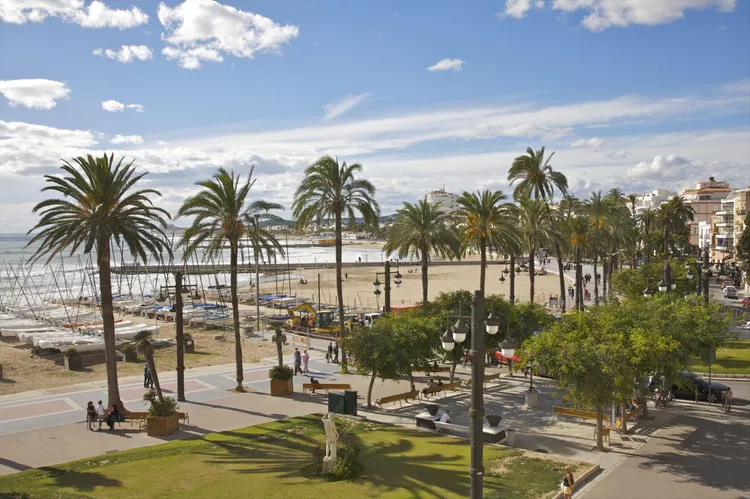Fact checked by
Erin Medlicott
Spain in August is a land of extremes. While many inland cities become virtual ghost towns as their inhabitants flee for the coast, those coastal areas are packed as Spaniards and visitors alike seek respite along the sunny shores.
If warm, sunny weather is what you desire, then you’re in luck—you’ll find it all across Spain in August. However, the intensity of the heat and the sun’s rays can vary depending on your location in the country. Moreover, the vibrant summer festivals and events taking place throughout the month further enhance August’s appeal. This guide will help you plan your visit by detailing what to expect weather-wise, the coolest events to keep on your radar, and helpful packing tips for a smooth trip.
Spain Weather in August
The weather you experience in Spain in August largely depends on your location. Down south in Andalusia, extreme heat and little to no precipitation are the norm, with temperatures in inland cities such as Seville and Córdoba often surpassing 100 degrees Fahrenheit. Coastal areas such as Málaga and Cádiz offer much more comfortable temperatures in the 80s.
Heading towards the heart of Spain, Madrid is quite sweltering too, with an average temperature of 90 degrees alongside high humidity. If you venture further north, the heat becomes more tolerable. Barcelona experiences warm and dry conditions in the high 80s, while the Atlantic coast doesn’t get much hotter than the high 70s, although the famous rain that often plagues this region could still occur throughout summer.
If you’ve come to Spain solely for the beaches, you’ll find swimming conditions excellent across the country all month long.
What to Pack
Warm, sunny weather (especially as you head south) means you’ll want to be as comfortable as possible while exploring Spain in August. Locals typically avoid casual clothing such as flip-flops and athletic shorts unless they are at the beach; instead, light, breezy clothing made from breathable fabric is essential. Sunglasses and sunscreen are crucial for protecting against the sun’s harsh rays, and a reusable water bottle is useful for those long walks outdoors.
August Events in Spain
Despite the heat, ample festivities occur throughout the country. Summer is one of the most vibrant times to be in Spain, allowing you to join locals and enjoy the celebrations:
- Madrid August Festivals: Three of the capital’s most emblematic neighborhoods throw colorful street parties one after the other, invigorating the city even as many residents leave for vacations.
- Semana Grande: Bilbao and San Sebastián both celebrate this Basque festival, featuring concerts, a fireworks competition, and traditional sporting events.
- Festa Major de Gràcia: Barcelona’s Gràcia neighborhood celebrates its largest party of the year mid-August, complete with extravagant street decorations and delicious local cuisine.
- Malaga Fair: Flamenco, fireworks, and plenty of wine transform the Costa del Sol capital into Andalusia’s liveliest destination during this vibrant summer party.
- Tomatina tomato fight: The tiny town of Buñol in Valencia hosts the world’s largest food fight, where tens of thousands celebrate by throwing tomatoes at each other.
August Travel Tips
- As previously mentioned, many inland cities tend to empty during the summer as people head to the coast for vacation. If you’re visiting a place like Madrid, be aware that many small, locally-owned businesses may close for a few weeks in August to allow owners and employees some time off.
- Simultaneously, August represents tourist high season for much of the country. If visiting iconic attractions such as Barcelona’s Sagrada Familia or Seville’s Alcázar is on your list, consider buying tickets online in advance to skip waiting in lines, which may involve enduring heat outside.
- For beachgoers, consider spending the day at a less crowded alternative to the main urban beach. This option is more relaxing and allows you to avoid the throngs of tourists. For instance, while Málaga’s La Malagueta Beach attracts numerous visitors, many locals head to the suburb of Pedregalejo (an easy bus ride from the city center), known for its quiet, picturesque beaches and some of the best seafood you’ll find on the Mediterranean.





